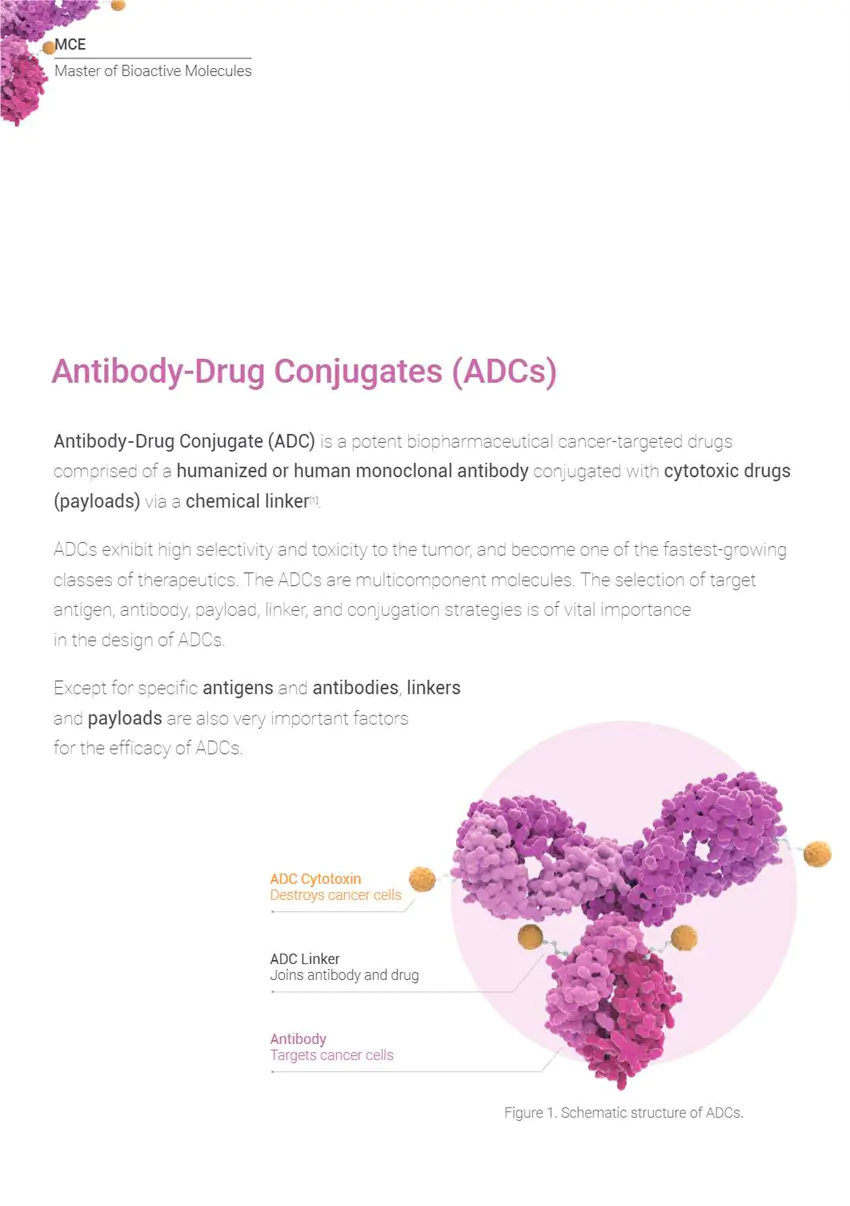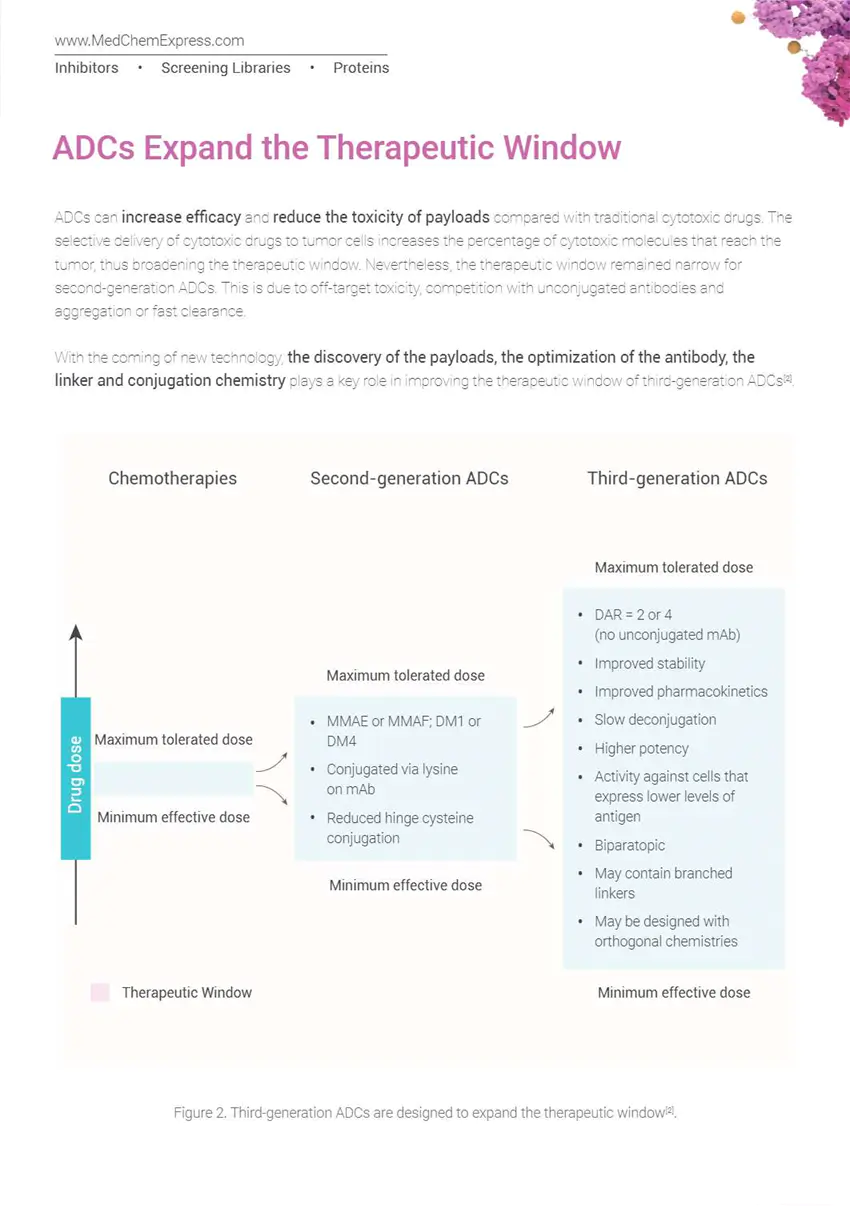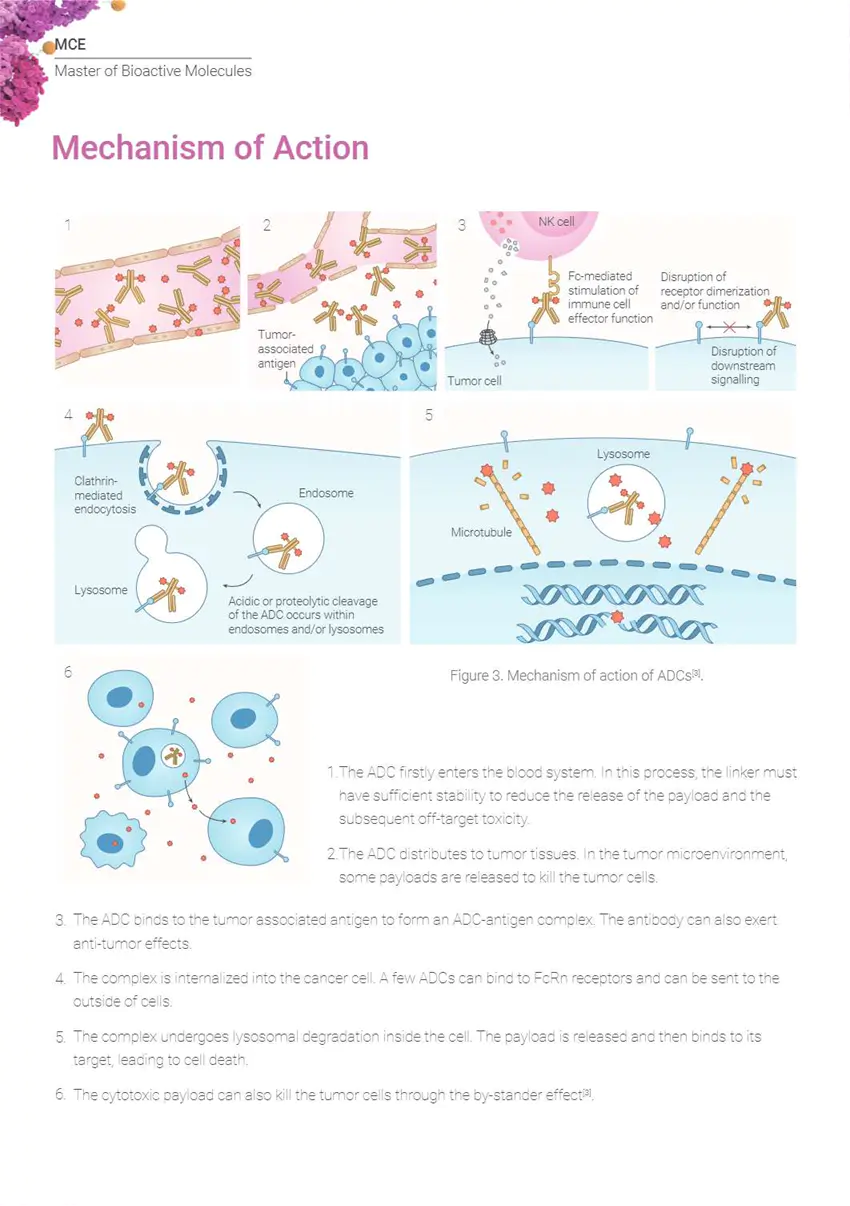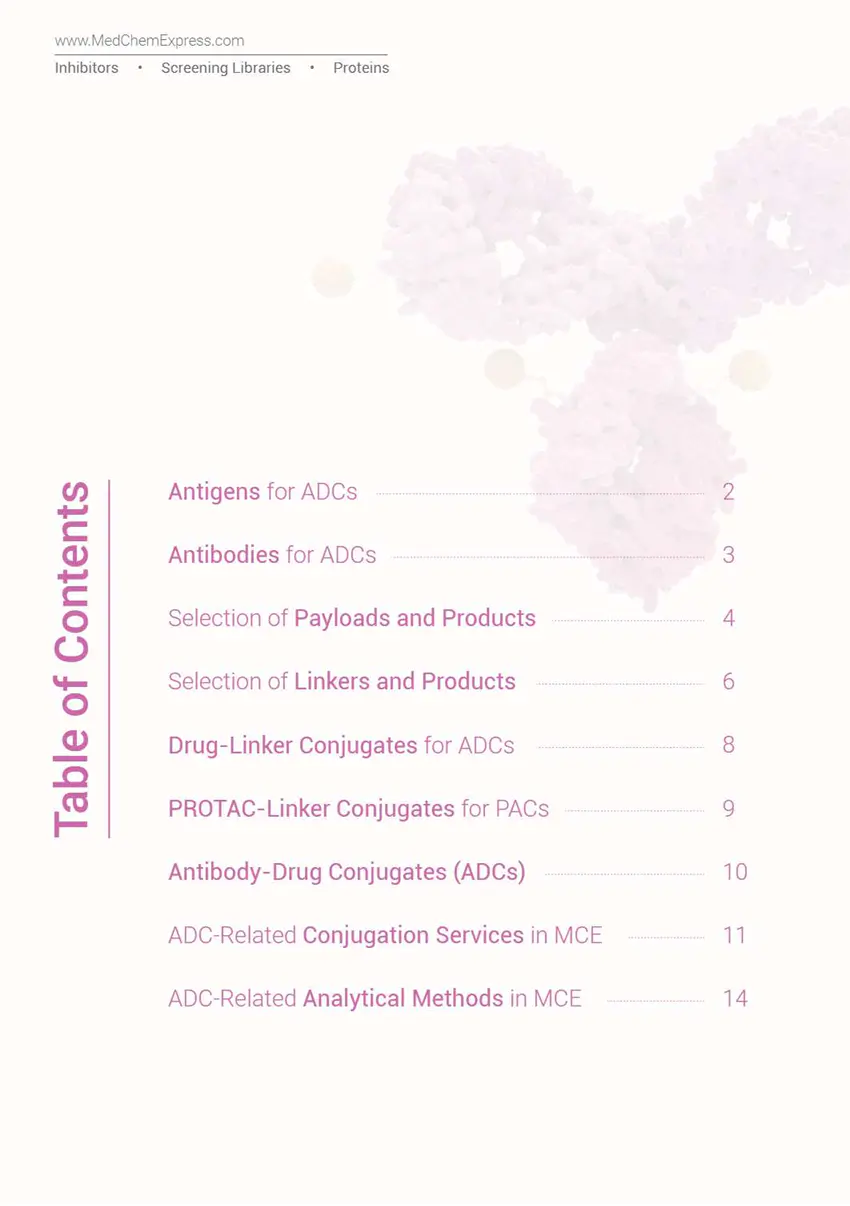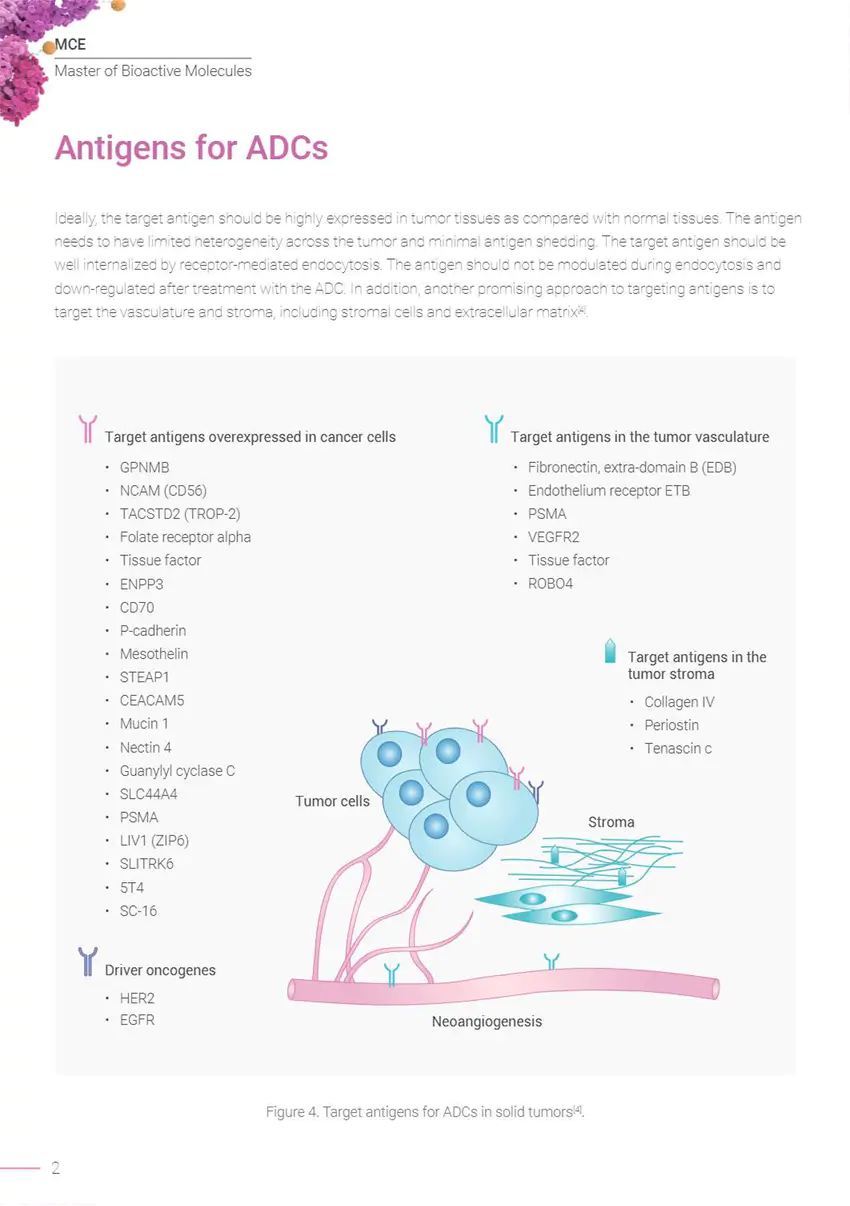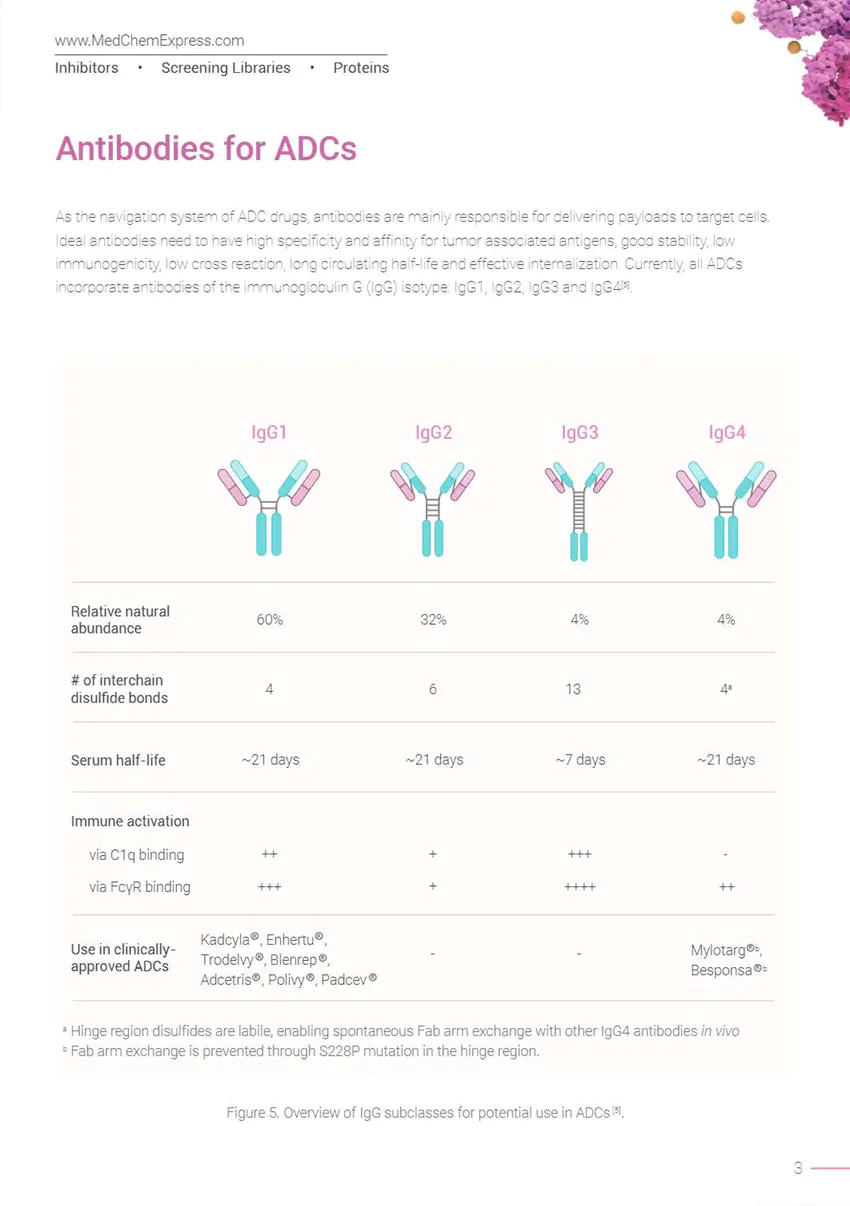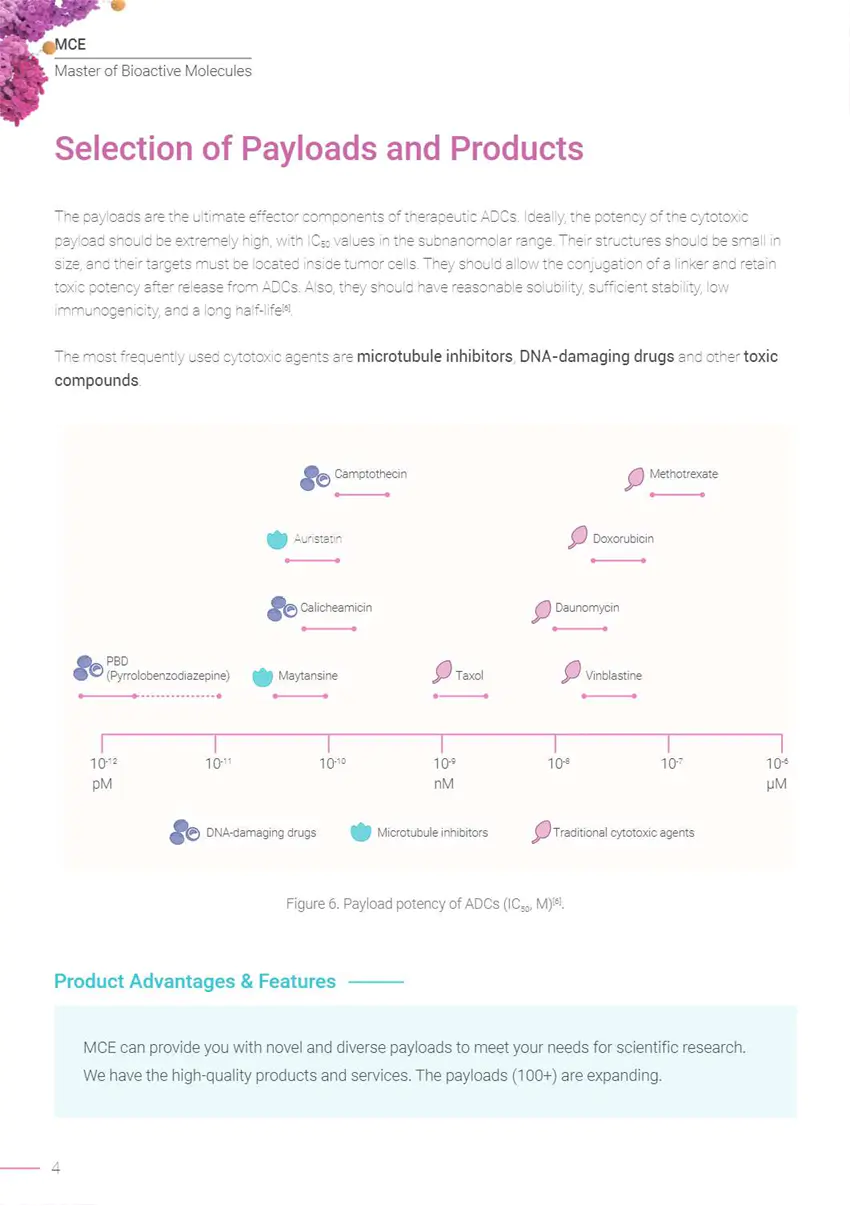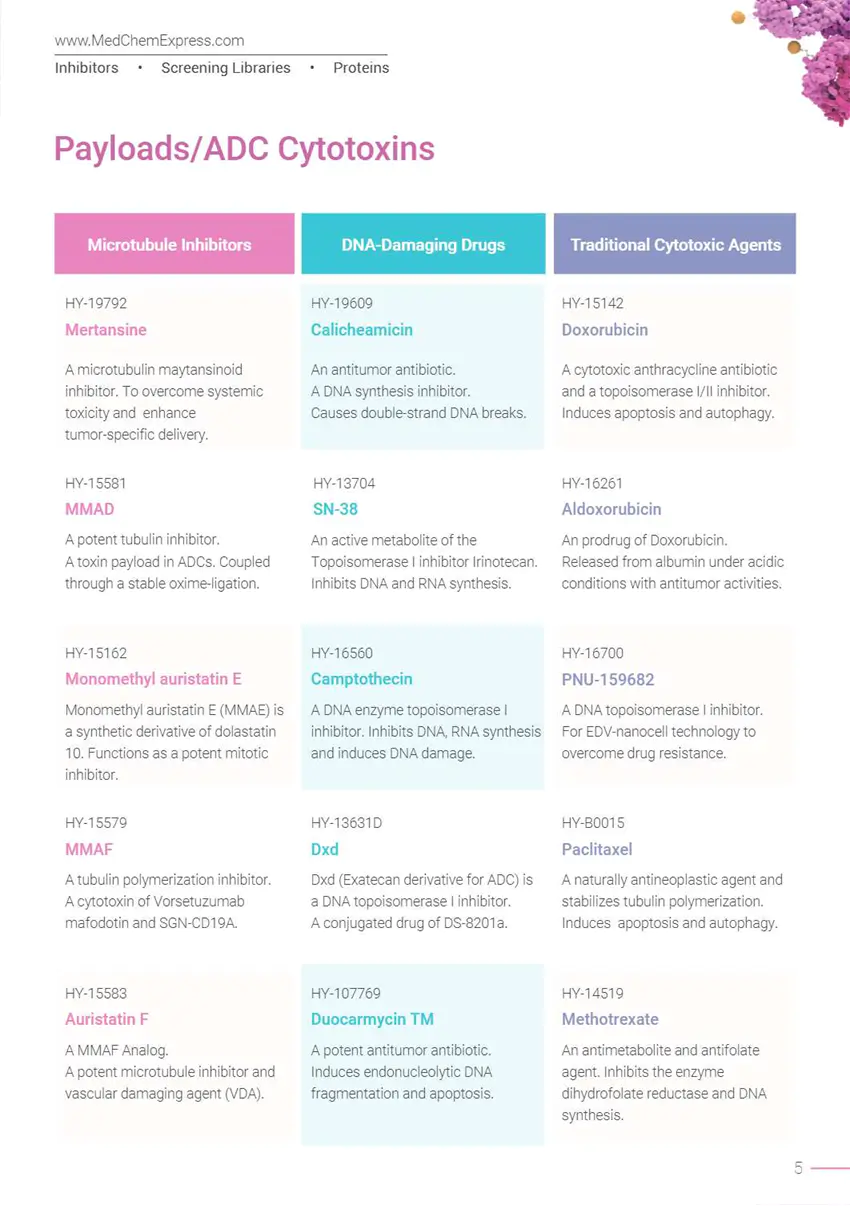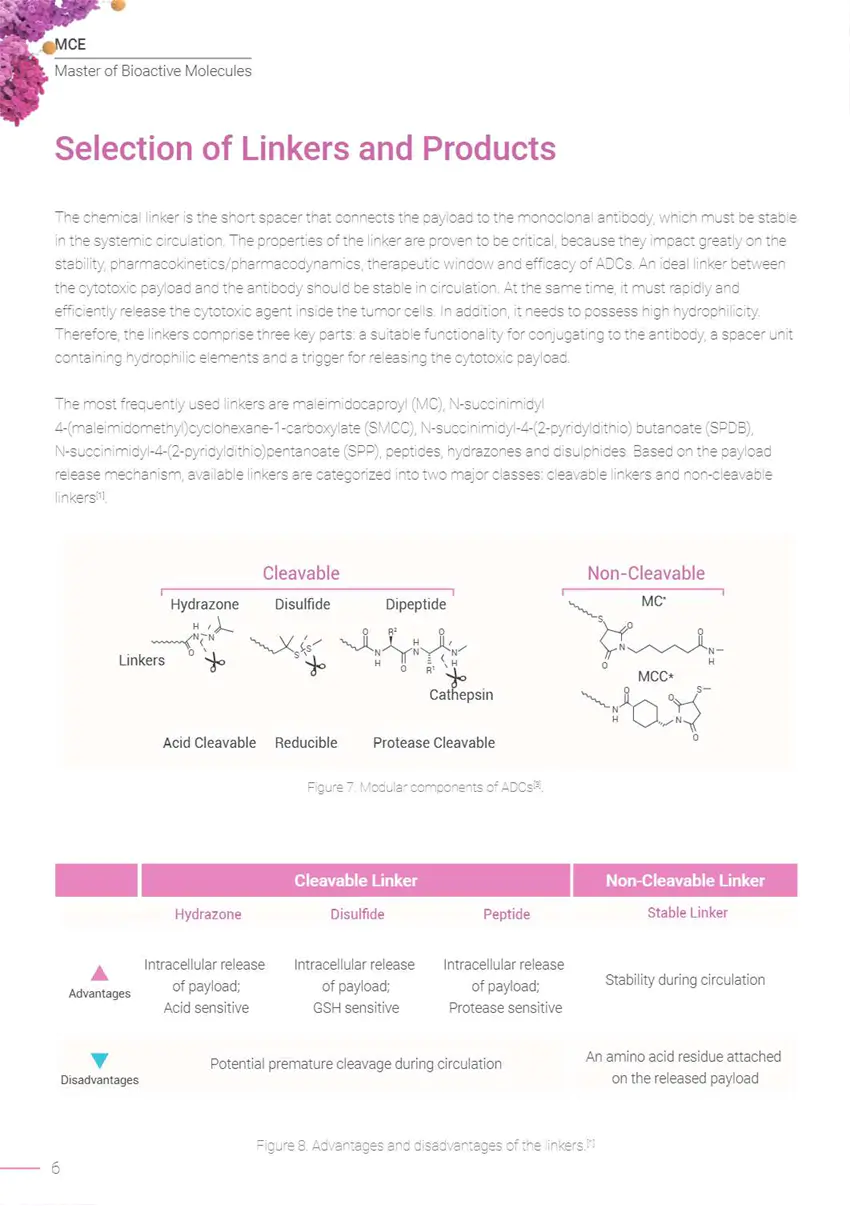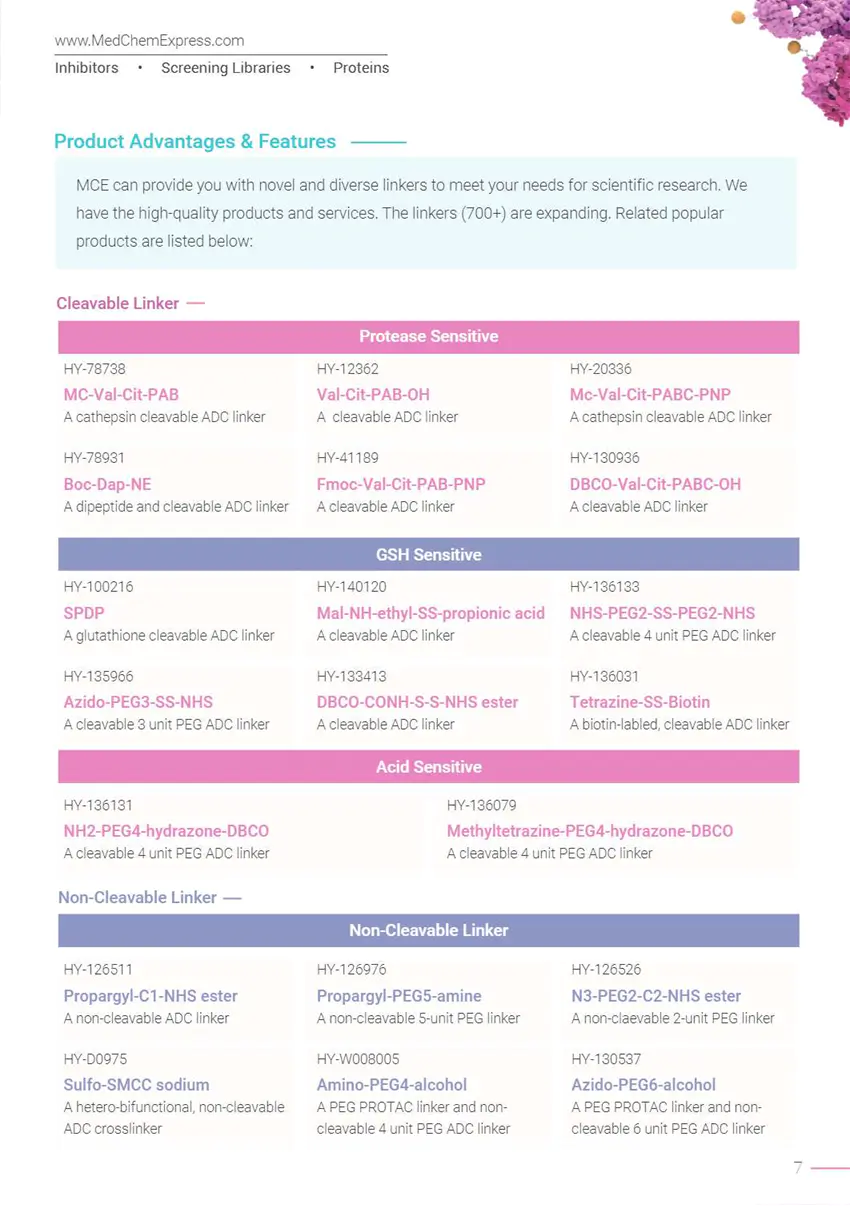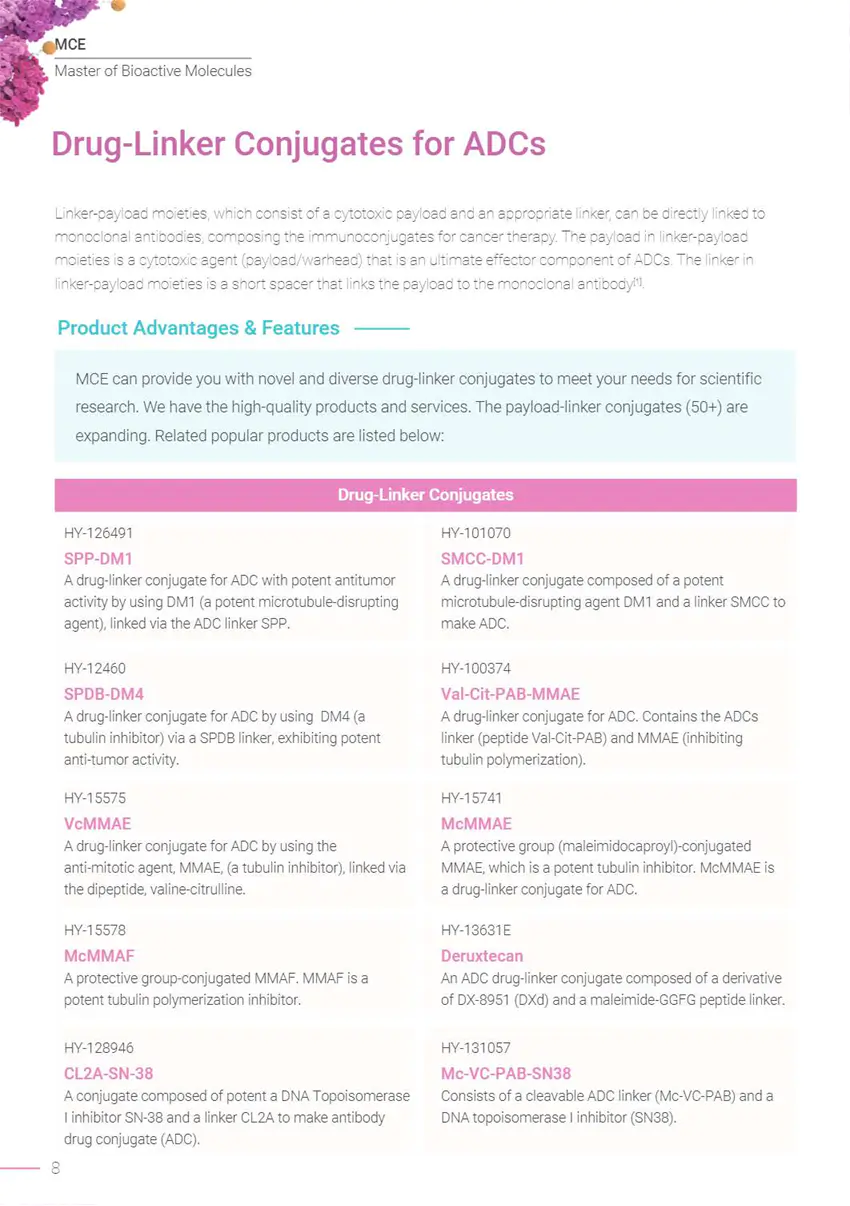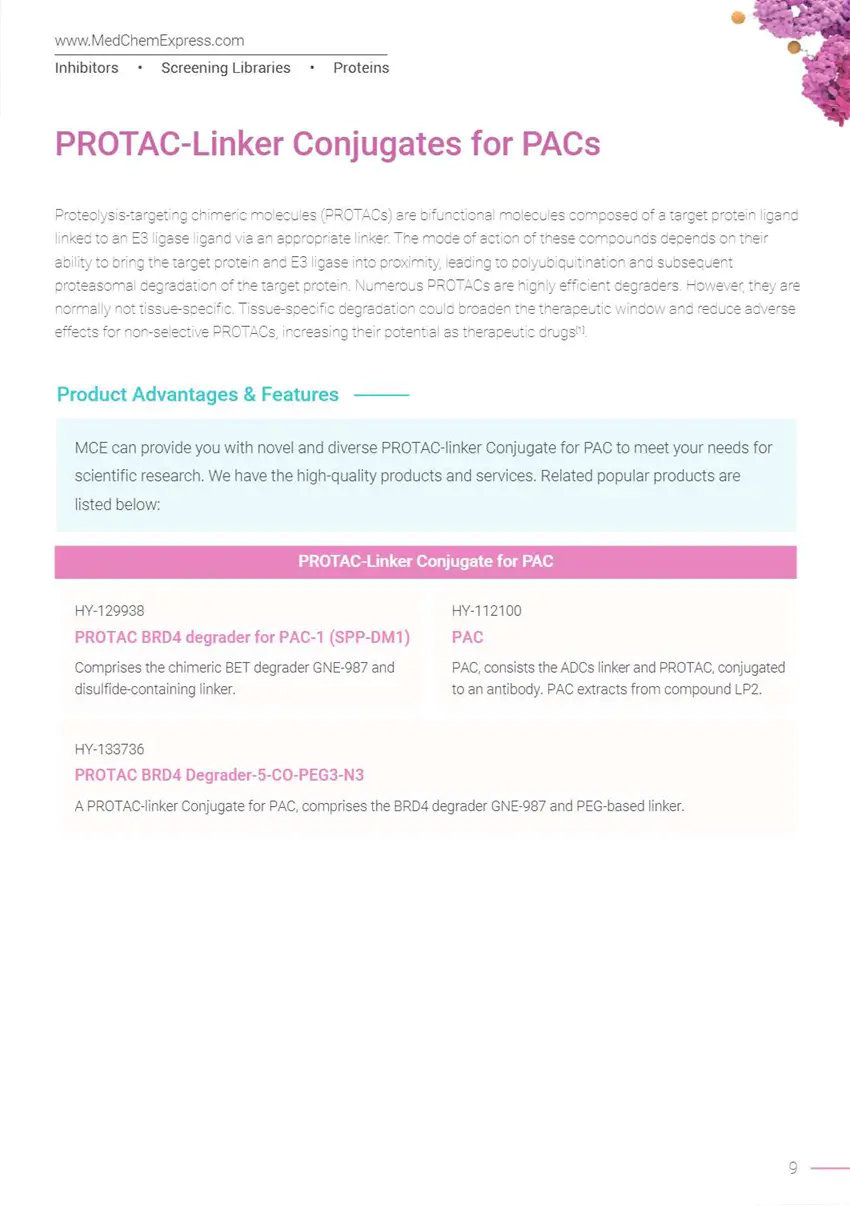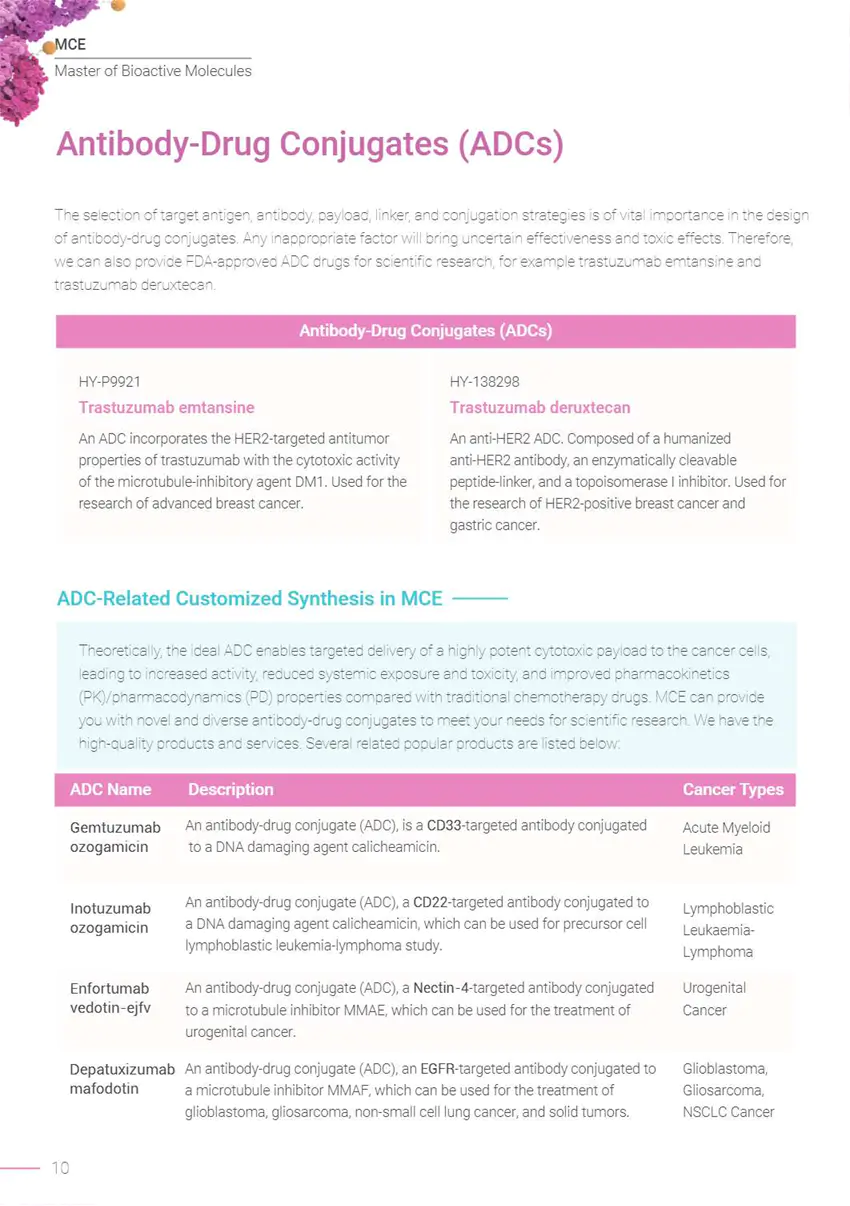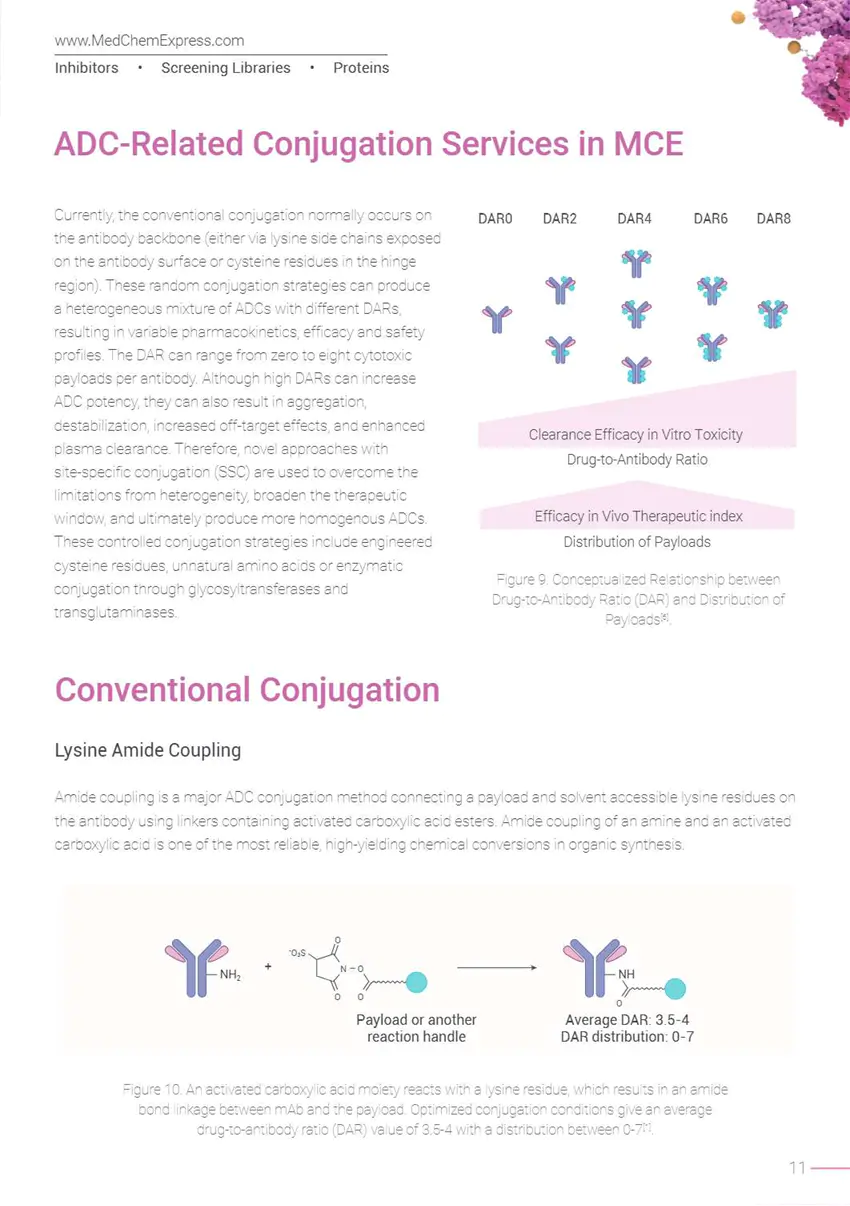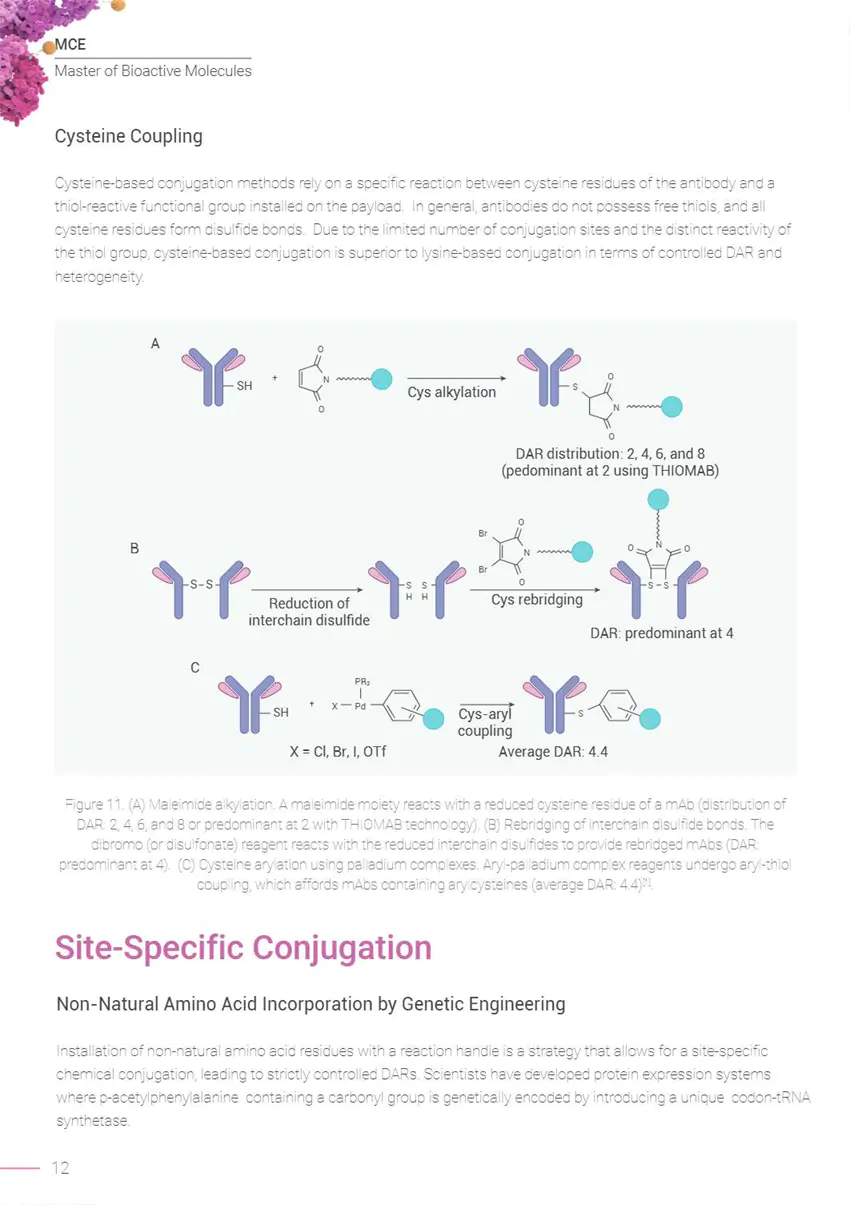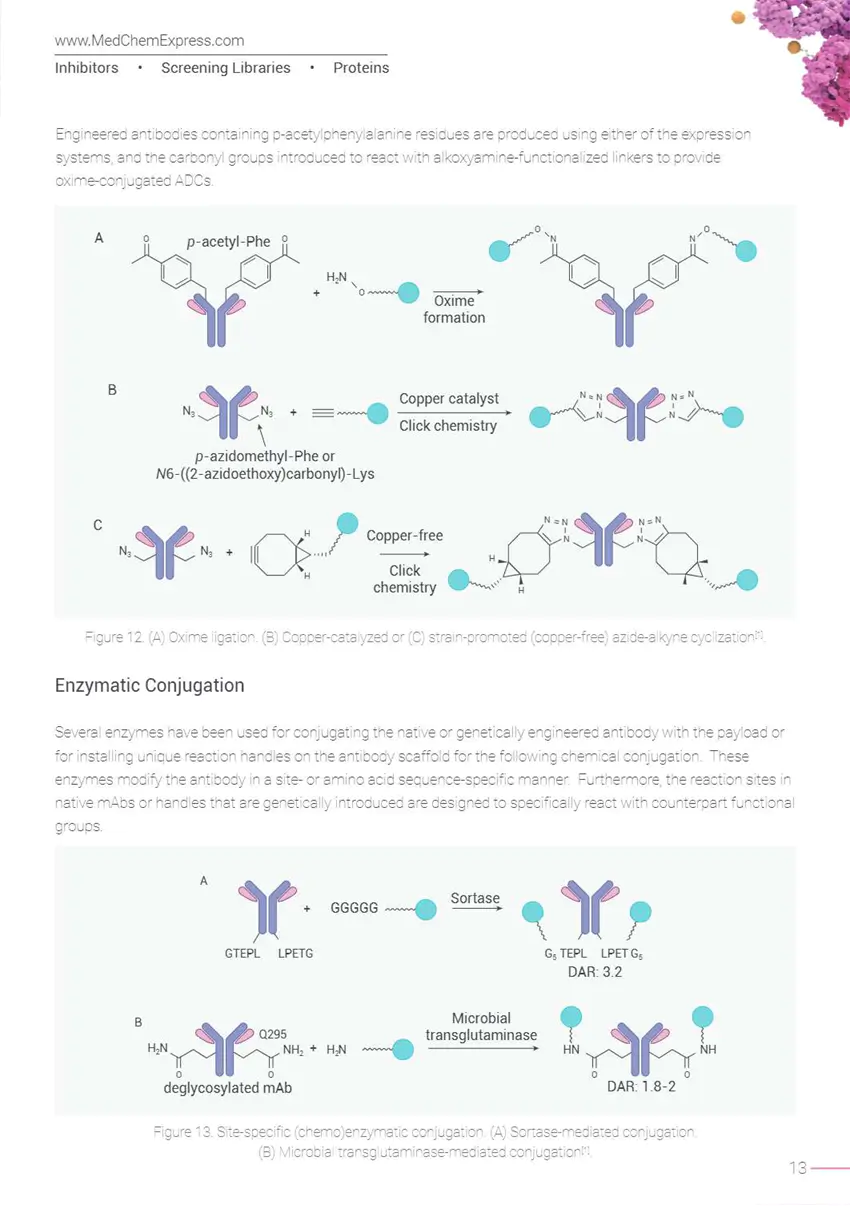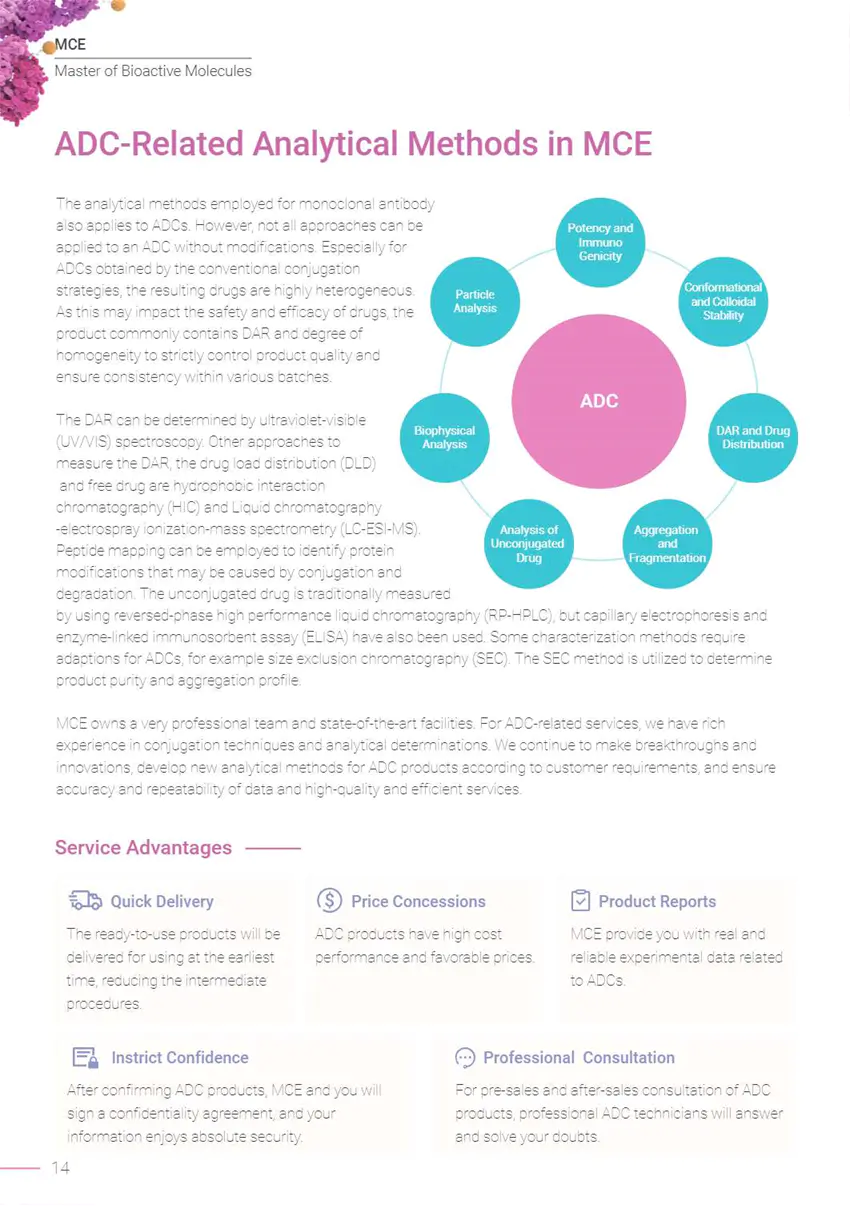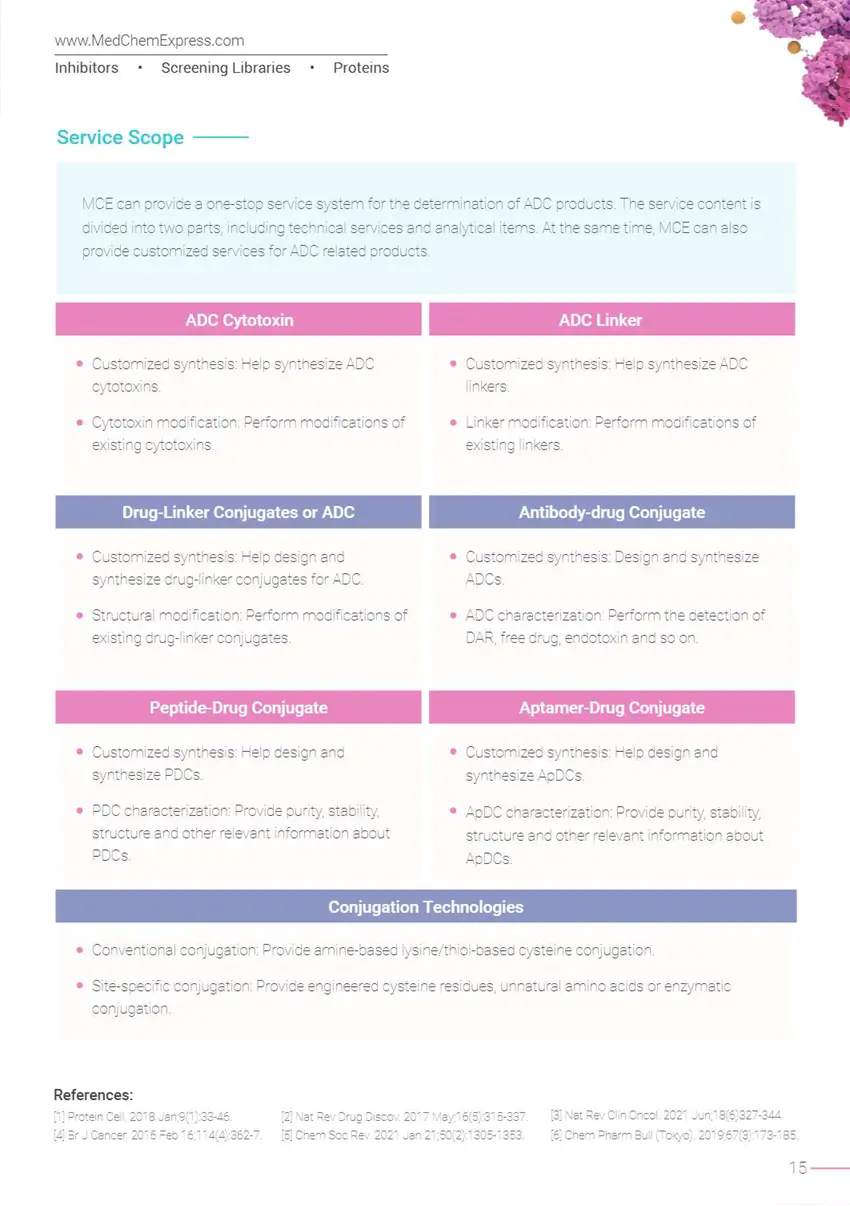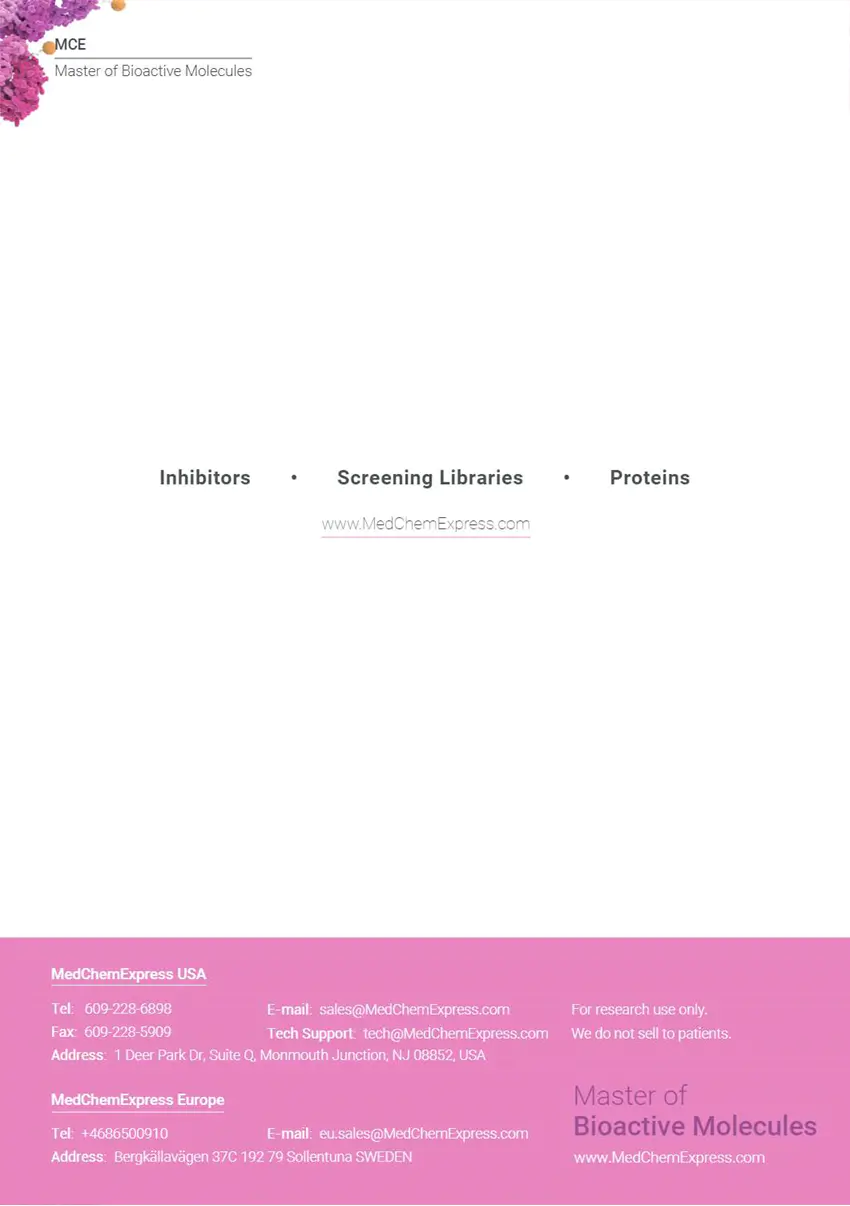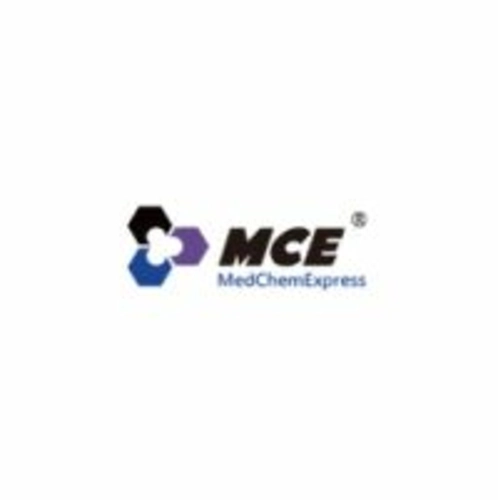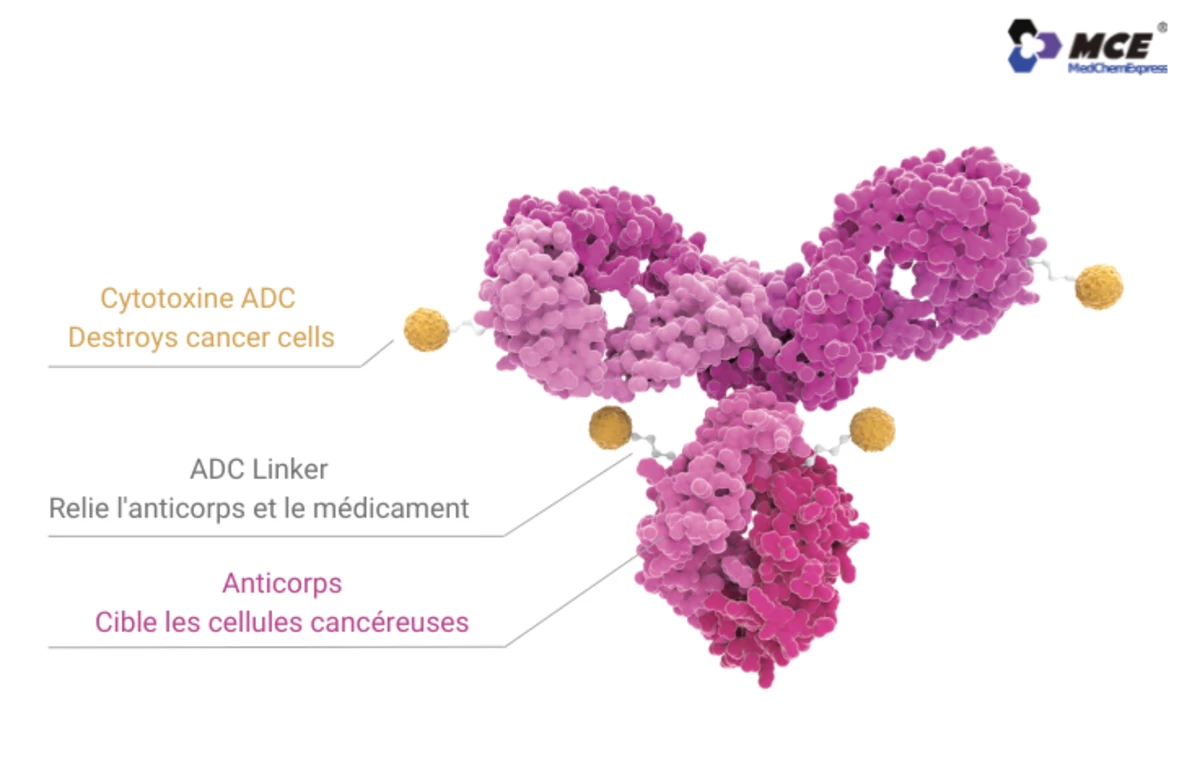manuel sur les conjugés anticorps-médicaments (adcs)
manuel détaillant les applications et mécanismes des adcs.
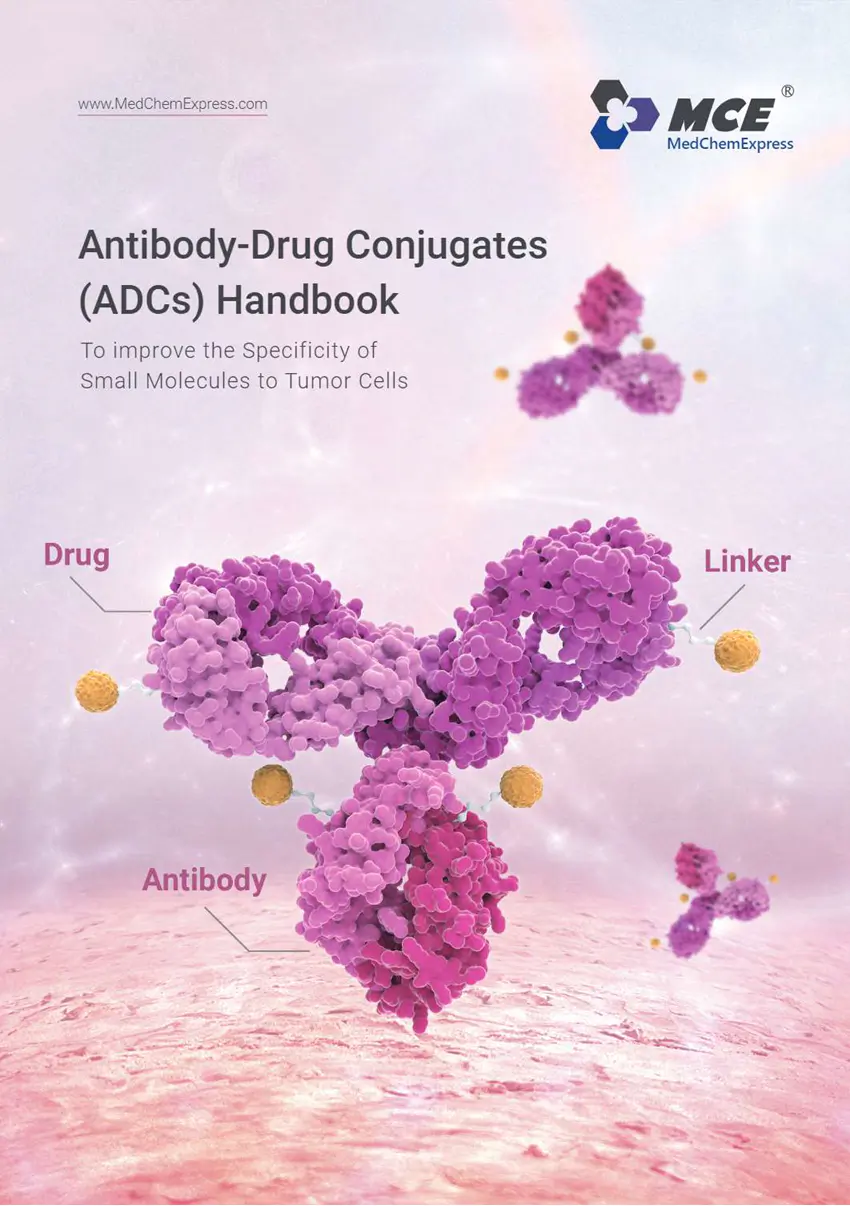
Contenu du document
Antibody-Drug Conjugates (ADCs) Handbook
Antibody-Drug Conjugate (ADC) is a potent biopharmaceutical cancer-targeted drug composed of two humanized or human monoclonal antibodies conjugated with cytotoxic drugs (payloads) and a chemical linker. ADCs exhibit high selectivity and toxicity to the tumor, becoming one of the fastest-growing classes of therapeutics. The ADCs are multi-component molecules, and the selection of target antigen, antibody, payload, linker, and conjugation strategies is vital in the design of ADCs.
- ADCs can increase efficacy and reduce the toxicity of payloads compared with traditional cytotoxic drugs.
- The mechanism of action involves the ADC's entry into the blood system, distribution to tumor tissues, binding to tumor-associated antigens, internalization, and lysosomal degradation.
- For ADCs, the linkers play a crucial role in improving the therapeutic window and efficacy.
Contents
- Antigens for ADCs
- Antibodies for ADCs
- Selection of Payloads and Products
- Selection of Linkers and Products
- Drug-Linker Conjugates for ADCs
- PROTAC-Linker Conjugates for PACs
- ADC-Related Conjugation Services in MCE
- ADC-Related Analytical Methods in MCE
Antigens for ADCs
Ideally, the target antigen should be highly expressed in tumor tissues compared with normal tissues. The antigen needs to have limited heterogeneity across the tumor and minimal antigen shedding. The target antigen should be well internalized by receptor-mediated endocytosis and not be modulated during endocytosis.
Antibodies for ADCs
As the navigation system of ADC drugs, antibodies are mainly responsible for delivering payloads to target cells. Ideal antibodies need high specificity and affinity for tumor-associated antigens, good stability, low immunogenicity, low cross-reaction, long circulating half-life, and effective internalization.
Selection of Payloads and Products
The payloads are the ultimate effector components of therapeutic ADCs. Ideally, the potency of the cytotoxic payload should be extremely high, with IC50 values in the subnanomolar range. Frequent cytotoxic agents used include microtubule inhibitors and DNA-damaging drugs.
Selection of Linkers and Products
The chemical linker is the short spacer that connects the payload to the monoclonal antibody, which must be stable in the systemic circulation. The properties of the linker impact the stability, pharmacokinetics/pharmacodynamics, therapeutic window, and efficacy of ADCs.
Drug-Linker Conjugates for ADCs
Linker-payload moieties, which consist of a cytotoxic payload and an appropriate linker, can be directly linked to monoclonal antibodies for cancer therapy.
PROTAC-Linker Conjugates for PACs
Proteolysis-targeting chimeric molecules (PROTACs) are bifunctional molecules that bring the target protein and E3 ligase into proximity, leading to polyubiquitination and subsequent proteasomal degradation of the target protein.
ADC-Related Conjugation Services in MCE
Conventional conjugation normally occurs on the antibody backbone via lysine side chains exposed on the antibody surface or cysteine residues in the hinge region. Site-specific conjugation strategies are used to produce more homogenous ADCs.
ADC-Related Analytical Methods in MCE
The analytical methods employed for monoclonal antibodies also apply to ADCs. The DAR (drug-to-antibody ratio) and degree of homogeneity impact product quality and consistency.
